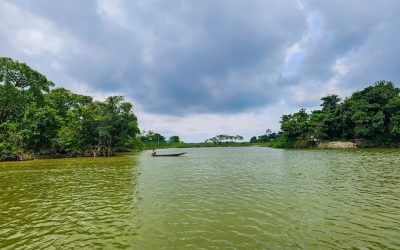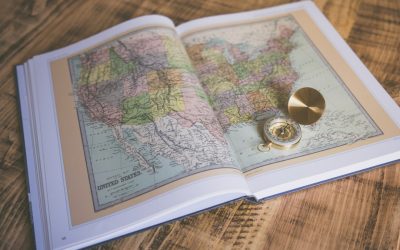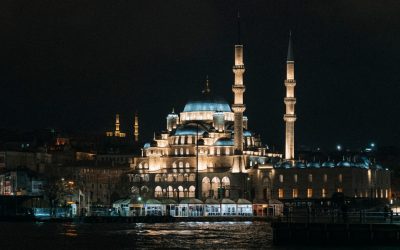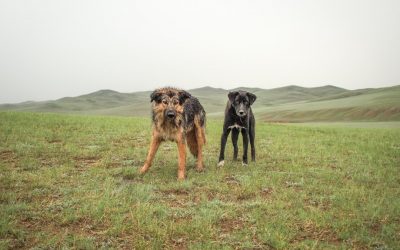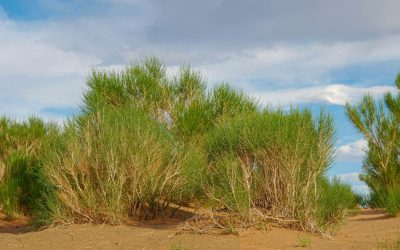Explore the World Through Geography, Natural Resources & Daily History
Clear, reliable and engaging guides that help you understand our planet — from UK geography education to global natural resources and On This Day history events.
Explore, discover, and learn about the wonders of our world! At Earth Site, we’re passionate about bringing geography, history, and science to life for curious minds of all ages. Whether you’re delving into historical events, uncovering the mysteries of the natural world, or seeking interactive resources, you’re in the right place.
Here, you can uncover the stories behind historical events, explore the natural wonders of our planet, and gain valuable insights into how the Earth’s systems shape our daily lives. From the towering peaks of mountain ranges to the far-reaching impacts of human innovation, we aim to make every topic both engaging and informative.
Start your journey of discovery with us today, and let’s make learning an adventure!
What We Cover
Earth Site brings together engaging and accessible educational content designed to help you understand the world, its history, and its natural systems.
🌍 Geography Education (UK & Worldwide)
We publish clear, easy-to-understand geography resources for students, teachers and curious learners. Our guides support geography education in the UK and cover physical geography, climate, ecosystems, population, and global development.
⛏️ Natural Resources & Environmental Geography
Explore detailed country profiles covering natural resources, mining, energy, geology and global environmental challenges. We show how nations manage minerals, water, land and ecosystems, and why these resources matter.
📅 On This Day in History
Every day has a story. Our On This Day history series features major events, anniversaries, traditions, and cultural milestones from around the world — with timelines, context, and fun facts.
TIMELINE
Climate Zones of Bangladesh: Different Climate Regions Of Bangladesh
Bangladesh, located in South Asia, is a country known for its diverse geography and climate. It is bordered by India to the west, north, and east, and by Myanmar to the southeast. The country is home to a wide range of climate zones, each with its own unique characteristics and weather patterns. Understanding these climate zones is crucial for various reasons, including agriculture, disaster management, and infrastructure development. Summary Bangladesh has diverse weather patterns due to its various climate zones. The tropical monsoon climate is the most common climate zone in Bangladesh. The subtropical highland climate offers cooler regions in Bangladesh. The semi-arid climate is prone to droughts in Bangladesh. The coastal climate has unique weather patterns in Bangladesh. The Tropical Monsoon Climate: Exploring Bangladesh’s Most Common Climate Zone The tropical monsoon climate is the most common climate zone in Bangladesh. It is characterized by high temperatures, heavy rainfall, and distinct wet and dry seasons. The wet season, known as the monsoon season, typically lasts from June to September, during which time the country experiences heavy rainfall and occasional flooding. The dry season, on the other hand, lasts from October to May and is characterized by lower temperatures and less rainfall. Regions in Bangladesh that experience the tropical monsoon climate include Dhaka, Chittagong, and Sylhet. These regions are known for their lush green landscapes and fertile soil, making them ideal for agriculture. However, the monsoon season can also bring about challenges such as flooding and landslides, which can have devastating effects on communities and infrastructure. The Subtropical Highland Climate: Discovering the Cooler Regions of Bangladesh The subtropical highland climate...
Political Boundaries of Bangladesh: Provinces, Districts, or Historical Boundaries.
Political boundaries refer to the demarcation lines that separate one political entity from another. These boundaries are crucial in defining the territorial limits of a country and determining its jurisdiction and governance. In the context of Bangladesh, understanding its political boundaries is of utmost importance due to its historical background and the impact it has on various aspects of the country’s development. Summary Bangladesh’s political boundaries have evolved over time due to various historical, social, and political factors. The country is currently divided into eight administrative divisions and 64 districts, each with its own unique characteristics and significance. Local government plays a crucial role in shaping and implementing policies at the grassroots level in Bangladesh. Political boundaries have a significant impact on the country’s economy, particularly in terms of trade and investment. There are ongoing controversies surrounding the demarcation of Bangladesh’s borders, including disputes with neighboring countries. Historical Overview of Bangladesh’s Political Boundaries Bangladesh’s political boundaries have evolved over time, shaped by historical events and political changes. Prior to its independence, Bangladesh was a part of British India and did not have its own distinct political identity. However, with the partition of India in 1947, Bengal was divided into two regions – West Bengal, which became a part of India, and East Bengal, which became a part of Pakistan as East Pakistan. The division of Bengal was met with significant challenges and tensions between East and West Pakistan due to cultural, linguistic, and economic differences. This eventually led to the Liberation War in 1971, during which East Pakistan fought for its independence from West Pakistan. The war resulted in...
Natural Resources of Bangladesh: Mineral Resources and Natural Gas in Bangladesh
Natural Resources of Bangladesh: Mineral Resources and Natural Gas in Bangladesh Bangladesh, a nation known for its fertile lands and vast river systems, is home to a wealth of natural resources that support its rapidly growing economy. From natural gas fields in the northeast to the mineral resources found underground, the natural resources of Bangladesh have long played a critical role in its development. In this article, we’ll explore the major natural resources of Bangladesh, examine how they contribute to economic growth, and discuss challenges and opportunities in their sustainable use. Whether you’re a student, policy enthusiast, or eco-conscious reader, this post will deepen your understanding of Bangladesh’s natural wealth. 📑 Article Outline 1. What Are the Major Natural Resources of Bangladesh? 2. How Does Natural Gas Drive Bangladesh’s Economic Growth? 3. What Are the Key Mineral Resources in Bangladesh? 4. How Important Are Water Resources in Bangladesh? 5. How Do Fisheries Resources Contribute to Bangladesh’s Economy? 6. What Role Do Forest Resources Play in Bangladesh? 7. What Energy Resources Are Found in Bangladesh? 8. How Are Natural Resources Managed in Bangladesh? 9. Why Is Conservation of Natural Resources Critical in Bangladesh? 10. What Is the Future of Bangladesh’s Natural Resources? 1. What Are the Major Natural Resources of Bangladesh? The natural resources of Bangladesh encompass a wide range of assets, including natural gas, mineral resources, arable land, fisheries, water, and forest resources. These are vital for agriculture, industry, and daily life. Among the major natural resources of Bangladesh, natural gas holds a dominant position. The country also produces other natural resources such as limestone, clay, and coal....
Cultural or Historical Sites of Bangladesh: Important Cultural Landmarks or Historical Sites In Bangladesh
Bangladesh, a country located in South Asia, is known for its rich cultural heritage. With a history that dates back thousands of years, Bangladesh has been influenced by various civilizations and empires, resulting in a diverse and vibrant culture. From ancient archaeological sites to magnificent architectural marvels, Bangladesh offers a treasure trove of cultural experiences for visitors to explore and discover. Summary Bangladesh has a rich cultural heritage that spans over thousands of years. The country is home to numerous historical sites that are a must-visit for anyone interested in history and culture. The ancient civilization of Bangladesh is a fascinating subject that offers a glimpse into the country’s past. Bangladesh is known for its architectural marvels, which are a testament to the country’s rich cultural heritage. Religious sites in Bangladesh hold great significance and are an important part of the country’s cultural fabric. Discover the Rich Cultural Heritage of Bangladesh Bangladesh’s cultural heritage is a reflection of its history and the various influences it has encountered over the centuries. The country’s history can be traced back to ancient times, with evidence of human habitation dating back to the Indus Valley Civilization. Over the years, Bangladesh has been ruled by various empires and dynasties, including the Maurya Empire, Gupta Empire, Pala Empire, and the Mughal Empire. Each of these empires has left its mark on the culture and heritage of Bangladesh. Top 10 Must-Visit Historical Sites in Bangladesh 1. Sundarbans: Located in the southwestern part of Bangladesh, the Sundarbans is a UNESCO World Heritage Site and one of the largest mangrove forests in the world. It is home to...
Population Density of Bahrain
Population density refers to the number of people living in a specific area, usually measured per square kilometer. It is an important indicator that helps us understand how crowded or sparsely populated an area is. In the case of Bahrain, a small island country in the Persian Gulf, population density is particularly significant due to its limited land area and growing population. Bahrain has experienced rapid population growth in recent decades, which has led to increased urbanization and higher population density in certain areas. Understanding the factors that contribute to population density in Bahrain is crucial for effective urban planning, resource allocation, and sustainable development. Summary Bahrain has a high population density, with over 1.6 million people living in an area of just 765.3 square kilometers. The population density in Bahrain has increased significantly over the past century, due to factors such as urbanization and rural-urban migration. Urbanization has been a major driver of population density in Bahrain, with the majority of the population living in urban areas. Rural-urban migration has also contributed to population density in Bahrain, as people move from rural areas to urban centers in search of better economic opportunities. Population density varies across Bahrain’s regions, with the highest densities found in the capital city of Manama and the surrounding areas. Historical Overview of Population Density in Bahrain Bahrain’s population density has undergone significant changes over time. In the early 20th century, the country had a relatively low population density, with most people living in rural areas and engaged in traditional occupations such as fishing and pearl diving. However, the discovery of oil in the 1930s...
Terrain and Topography of Bahrain: mountains, valleys, and plains.
Bahrain, a small island country located in the Persian Gulf, is known for its rich history, vibrant culture, and stunning landscapes. Understanding Bahrain’s topography is crucial in order to appreciate the country’s unique characteristics and the impact it has on various aspects of life. From the flat plains to the desert landscape, from the hills and mountains to the wadis, Bahrain’s topography plays a significant role in shaping its economy, culture, history, agriculture, urban planning, tourism, and environment. Summary Bahrain’s terrain is mostly flat, with some hills and mountains in the south. The desert plays a significant role in Bahrain’s topography, covering much of the island. Wadis, or dry riverbeds, are important features in Bahrain’s geography, providing natural drainage and water storage. The hills and mountains in the south of Bahrain are home to unique flora and fauna, including the endangered Arabian leopard. Bahrain’s topography has a significant impact on agriculture, urban planning, tourism, and the environment, both historically and in the future. The Flat Plains of Bahrain The flat plains of Bahrain are a defining feature of the country’s topography. These vast expanses of flat land are primarily composed of sandy soil and are located in the central part of the island. The plains are characterized by their low elevation and lack of significant natural features such as hills or mountains. The importance of the flat plains in Bahrain’s economy cannot be overstated. These fertile lands are ideal for agriculture and have been used for centuries to grow crops such as dates, fruits, vegetables, and grains. Agriculture has played a vital role in Bahrain’s economy, providing employment opportunities...
Climate Zones of Bahrain: Different climate regions Of Bahrain
Bahrain, a small island country located in the Persian Gulf, has a diverse range of climate zones due to its unique geography. Understanding these climate zones is crucial for various reasons, including planning and decision-making in sectors such as agriculture, tourism, and urban development. Bahrain’s climate zones include the desert, semi-arid, Mediterranean, humid subtropical, coastal, and mountain zones. Each zone has its own distinct characteristics in terms of temperature, precipitation, vegetation, and wildlife. Summary Bahrain has diverse climate zones, including desert, semi-arid, Mediterranean, humid subtropical, coastal, and mountain. The desert climate zone is characterized by hot and dry weather, with temperatures reaching up to 50°C in summer. The semi-arid climate zone has a similar climate to the desert zone, but with slightly more rainfall. The Mediterranean climate zone has mild winters and hot summers, with rainfall occurring mainly in winter. The humid subtropical climate zone has hot and humid summers, with mild winters and high rainfall throughout the year. The Desert Climate Zone of Bahrain The desert climate zone is the dominant climate zone in Bahrain. It is characterized by extremely high temperatures and very low precipitation. The average temperature in this zone can reach up to 45 degrees Celsius (113 degrees Fahrenheit) during the summer months. Rainfall is scarce, with an average annual precipitation of less than 100 millimeters (4 inches). The lack of water and extreme temperatures make it challenging for vegetation to thrive in this zone. Despite the harsh conditions, some plant species have adapted to survive in the desert climate of Bahrain. These include date palms, acacia trees, and various types of desert shrubs. Wildlife...
Political Boundaries of Bahrain: Provinces, Districts, or Historical Boundaries.
Political boundaries are the lines that define the territorial limits of a country or region. They are crucial for maintaining order, establishing governance, and ensuring the efficient allocation of resources. In Bahrain, a small island nation located in the Persian Gulf, political boundaries play a significant role in shaping the country’s governance and society. Bahrain’s political boundaries have evolved over time due to various historical factors, including colonization, territorial disputes, and geopolitical changes. Understanding these boundaries is essential for comprehending the country’s administrative divisions, distribution of power and resources, and social dynamics. In this article, we will explore the historical background of Bahrain’s political boundaries, examine its administrative divisions, discuss the role of political boundaries in governance and society, and analyze the challenges and controversies surrounding them. Summary Bahrain’s political boundaries have evolved over time due to various historical and political factors. The country is divided into four governorates, which are further divided into twelve districts and sixty-three municipalities. The administrative divisions of Bahrain play a crucial role in the country’s governance and decision-making processes. Political boundaries have a significant impact on Bahraini society, including issues related to identity, representation, and resource allocation. Despite some challenges and controversies surrounding Bahrain’s political boundaries, there are opportunities for future development and progress in this area. Historical Background of Bahrain’s Political Boundaries Bahrain has a rich history that has influenced its political boundaries. The island has been inhabited since ancient times and has been ruled by various empires and dynasties, including the Dilmun civilization, the Persians, the Portuguese, and the British. These different powers have left their mark on Bahrain’s territorial limits....
Natural Resources of Bahrain: What are the Natural Resources In Bahrain
Natural Resources of Bahrain: A Small Island with Strategic Wealth Bahrain may be a small island nation, but it punches above its weight when it comes to its natural resources and economic impact. Nestled in the Persian Gulf, Bahrain’s natural resources have played a pivotal role in shaping the country’s GDP and driving development across key sectors. From the historic discovery of oil in 1932 to ongoing efforts to diversify the economy, understanding the natural resources in Bahrain is essential for grasping its past achievements and future potential. In this post, we’ll dive into the resources in Bahrain, analyze their economic significance, and discuss why natural resources of Bahrain remain a hot topic in today’s shifting global economy. Whether you’re a student of economics, a Middle East enthusiast, or just curious about this island nation, this deep dive is worth your read. 📑 Outline of the Article 1. What are the main natural resources in Bahrain? 2. How important are oil and gas to Bahrain’s GDP? 3. The historic discovery of oil in 1932 – why was it significant? 4. Bahrain’s gas reserves and production levels: Are they sustainable? 5. What are Bahrain’s marine resources and how do they support the economy? 6. How is Bahrain managing its limited arable land and agricultural sector? 7. What role does pearl diving play in Bahrain’s heritage and economy? 8. How has Bahrain’s oil industry evolved since the oil boom? 9. What is the contribution of natural gas rents and total natural resources rents? 10. Is Bahrain moving toward economic diversification and sustainability? 1. What are the main natural resources...
Cultural or Historical Sites of Bahrain: Important Cultural Landmarks or Historical Sites In Bahrain
Bahrain, a small island nation in the Arabian Gulf, is known for its rich cultural heritage that dates back thousands of years. The country has been influenced by various civilizations throughout history, resulting in a unique blend of traditions, customs, and architectural wonders. From ancient forts to mosques and museums, Bahrain offers a journey through time, allowing visitors to explore its fascinating past and vibrant present. In this article, we will delve into Bahrain’s rich cultural heritage and discover the treasures that make this island nation truly special. Summary Bahrain has a rich cultural heritage that spans thousands of years. The Dilmun era was a significant period in Bahrain’s ancient civilization. Al-Fateh Mosque is the largest religious site in Bahrain and a must-visit for tourists. The Bahrain National Museum is a treasure trove of history and culture that showcases the island’s rich heritage. Qal’at al-Bahrain, Bahrain Fort, and Arad Fort are ancient forts that offer a glimpse into Bahrain’s military past. Bahrain’s Rich Cultural Heritage: A Journey Through Time Bahrain’s history is a tapestry woven with the threads of various civilizations that have left their mark on the island. From the Dilmun civilization to the Portuguese and British colonial periods, each era has contributed to Bahrain’s cultural heritage. The country’s strategic location in the Arabian Gulf has made it a hub for trade and commerce, attracting merchants and settlers from different parts of the world. Discovering Bahrain’s Ancient Civilizations: The Dilmun Era One of the most significant periods in Bahrain’s history is the Dilmun era, which dates back to around 2000 BC. The Dilmun civilization was a major trading...
Political Boundaries of Mongolia: Provinces, Districts, or Historical Boundaries.
Political boundaries are the lines that separate one political entity from another, defining the extent of its territory and jurisdiction. They play a crucial role in understanding a country’s governance and history, as they shape the relationships between different regions and communities within a nation. In the case of Mongolia, political boundaries have evolved over time, reflecting its rich history and interactions with neighbouring countries. Mongolia is a landlocked country located in East Asia, bordered by Russia to the north and China to the south, east, and west. It covers an area of approximately 1.6 million square kilometers, making it the 18th largest country in the world. The political boundaries of Mongolia have been shaped by various historical events, including the rise and fall of the Mongol Empire, colonization by the Qing Dynasty, and the influence of the Soviet Union. Understanding these boundaries is essential for comprehending Mongolia’s governance structure and its relationship with its neighbours. Summary Mongolia is divided into 21 provinces and 1 municipality, each with its own local government. The historical boundaries of Mongolia have changed over time, from the Mongol Empire to modern times. Political boundaries have a significant impact on Mongolia’s economy and society, with some regions being more developed than others. Local government plays a crucial role in managing Mongolia’s political boundaries, but faces challenges such as limited resources and capacity. The future of Mongolia’s political boundaries presents both opportunities and threats, including potential conflicts with neighbouring countries and the need to balance economic development with environmental conservation. The Administrative Division of Mongolia: Provinces and Districts Mongolia is divided into 21 provinces (aimags)...
Climate Zones of Mongolia: Different climate regions Of Mongolia
Mongolia, located in Central Asia, is known for its vast and diverse landscapes. From the towering Altai Mountains in the west to the expansive Gobi Desert in the south, Mongolia’s geography plays a significant role in shaping its climate. Understanding Mongolia’s climate zones is crucial for various reasons, including agriculture, tourism, and sustainable development. Summary Mongolia has six distinct climate zones, each with its own unique characteristics. The Altai Mountains have a cold and dry climate, with temperatures dropping to -40°C in winter. The Gobi Desert has a semi-arid climate, with hot summers and cold winters. The Khentii Mountains have a humid continental climate, with heavy rainfall in summer and snow in winter. Northern Mongolia has a subarctic climate, with long, cold winters and short, cool summers. Central Mongolia has a warm temperate climate, with hot summers and cold winters. Elevation plays a significant role in determining climate in Mongolia, with higher elevations generally being colder and drier. Climate change is having a significant impact on Mongolia’s climate zones, with rising temperatures and changing precipitation patterns. Traditional livelihoods in Mongolia, such as nomadic herding, have adapted to the country’s harsh climate over centuries. There are opportunities for sustainable development in Mongolia’s climate zones, such as renewable energy and eco-tourism. The Cold and Dry Climate of the Altai Mountains The Altai Mountains, located in western Mongolia, experience a cold and dry climate. The region is characterized by long, harsh winters with temperatures dropping well below freezing and short, cool summers. The altitude of the mountains contributes to the extreme cold temperatures experienced in this region. One unique feature of the...
